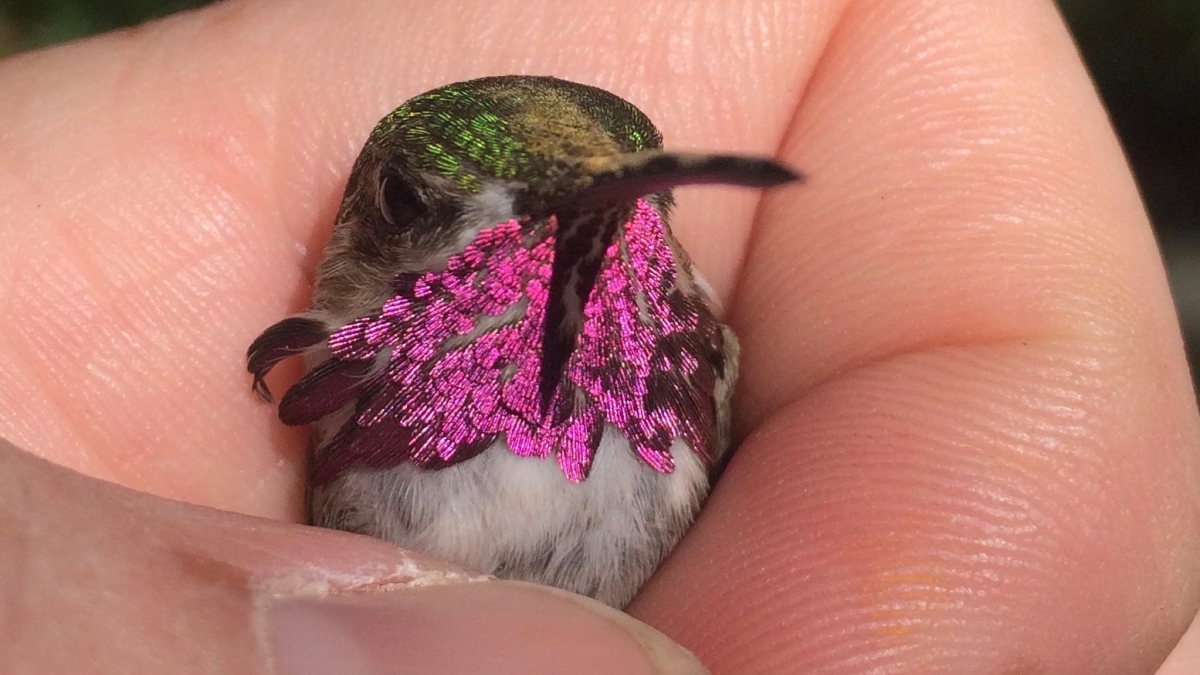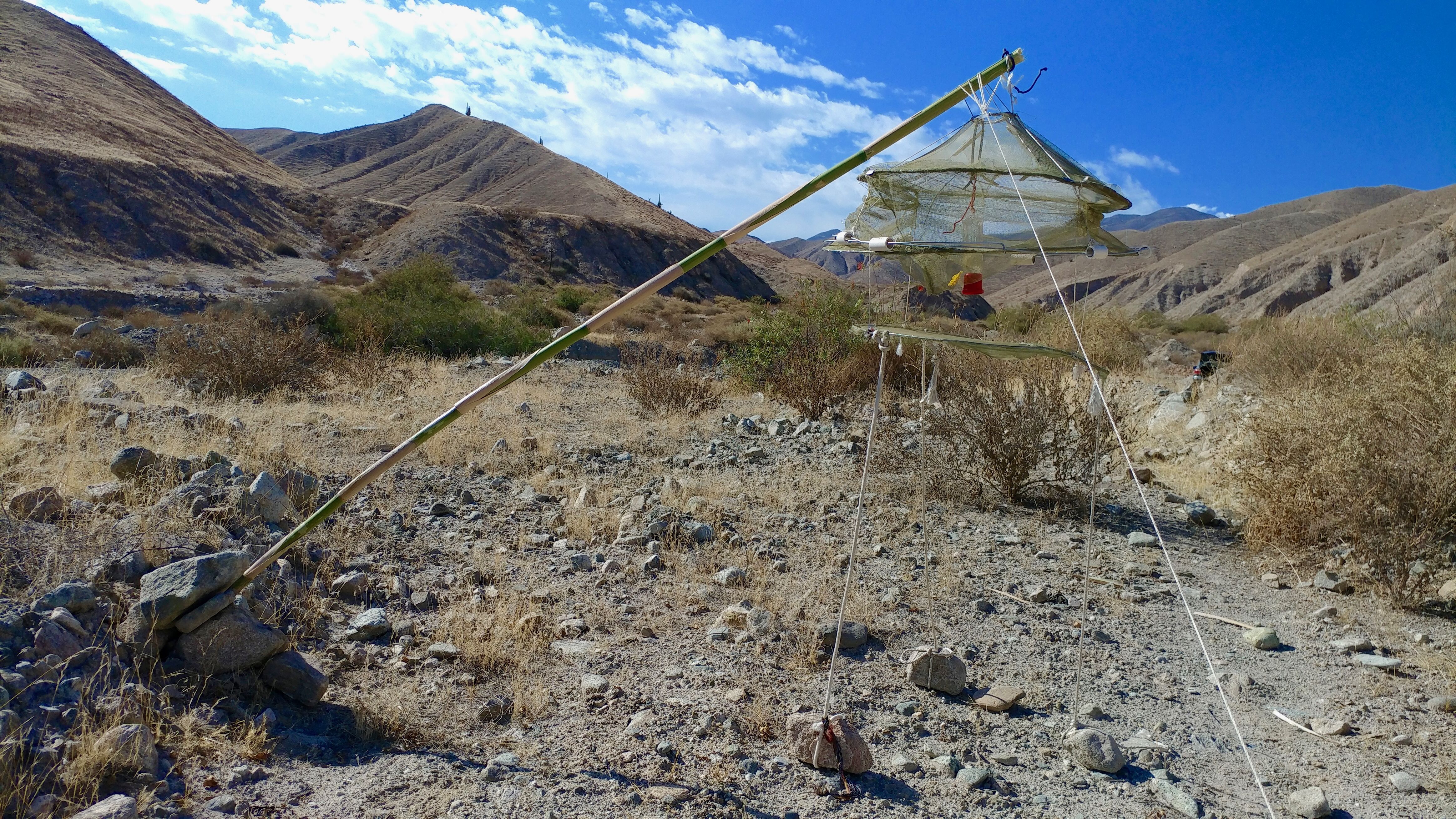For human males (usually in their 20s), appealing to a potential mate often involves body spray, long stints at the gym and conspicuous bottle service at the club.
And hummingbird males work at least as hard at the same game. A recent study from Arizona State University’s School of Life Sciences examined how male hummers use colorful plumage and display dances during courtship.
People sometimes refer to hummingbirds as jewels of the air. Like an Instagram model finding her light, male hummingbirds with iridescent plumage know how to sit at a precise angle relative to the sun so those feathers look their best.
Researchers studied relationships between the shimmering plumage, courtship displays, solar environment and male color appearance during courtship displays among six species of North American bee hummingbirds.
What they found was simple.
“Whatever it takes to show off — different strategies for different folks,” said Kevin McGraw, a behavioral ecologist at ASU who primarily studies the colors of animals.
When you look at the different species, some have really big patches of color and some have small patches. Some do really wide, kind of clunky display dances and others are really short and precise sprinters.
“We asked: Do those two relate to one another across species?” McGraw said. “Do the ones that are really big and colorful, are they extravagant in their dances, or vice versa? We found species that had bigger, bolder patches of color had shorter, quicker displays, and species that had tiny patches of color tended to have wide ranges of displays. There was that negative relationship across species at one level.”
Rick Simpson, principal investigator of the study, and McGraw called that negative relationship the House/Car Paradox. If you’re trying to attract a mate, do you put all your money into a fancy house and have a cheap car? Or do you have a basic house but a really luxurious car?
“Certainly some can afford both, and those would be the best, but in nature, for animals, resources are limited, so selection might favor them to pick: one to exaggerate and the other one, relatively speaking, suffers in its degree of exaggeration,” McGraw said. “That’s been shown in human examples but also in some other crazy creatures out there.”
In this video, the first hummer is dancing like he’s out at a night at the Roxbury. But he has a rather small plumage patch. The last bird is almost nothing but plumage, and he’s not moving a muscle.
Sitting at the right angle and orientation to the sun to max out display varied among species as well. Some males faced the sun and some didn’t. The ones who faced the sun had flashy, exaggerated displays. Birds who didn’t face the sun had a consistent color and had bigger plumage patches.
“It almost seemed there were two strategies there,” said Simpson, a postdoctoral fellow in the Department of Biological Sciences at the University of Windsor. “Are you trying to show off your behavior, or are you trying to show off your plumage?”
Simpson has observed there are multiple strategies both across species and within species.
Within species, males with larger plumage patches tended to not face the sun. When they displayed, they weren’t flashy — they were consistently colored.
“We hypothesized that maybe that’s the better way to show off how big your plumage is, whereas males that had bigger movements when they did their dance, those tended to face the sun and were a lot flashier; they had a lot of color change when they did their display,” Simpson said. “Maybe those males were trying to show off their dance moves instead of their plumage.”
For Simpson, the most interesting fact he found was that all these traits are interrelated to each other.
“It seems like there are these two evolutionary-divergent strategies: one that emphasizes exaggerated plumage and showing that off as best as possible,” he said. “The other is exaggerated behaviors and showing that off. It seems like there might be a tradeoff between the two. Of the species I studied, the ones with the biggest plumage patches had the simpler displays, and the ones with the smallest plumage patches had the more extreme displays. They key component I was interested in was how are these signals interacting and what does that interaction look like?”
How he did it
To put it mildly, the hummingbird is not an easy animal to study.
“They’re very fast, and if we let them all loose in the wild, they go all over the place and they’re really hard to track,” McGraw said. “Rick had to use this confined environment for the females to make sure he could set up his camera and get it all in at amazingly precise angles and direct dimensions for all the measurements he took.”
“It was definitely a big project,” Simpson said. “There was definitely a lot of trial and error, you could say.”
He met a hummingbird communication expert who had studied acoustic signals in similar species. He suggested capture methods and ways of getting females to spark male displays.
Then Simpson had to 1) do it on his own and 2) find field sites for study. He needed places with a lot of hummingbird territories and places where he could set up feeders to trap females.
Then he had to catch them. Mist nets — the traditional way to trap birds for study — aren’t the best thing to use with hummingbirds. Drop traps that fit over feeders are the way to go. The birds come inside the cylinder to feed and then you drop the walls of the trap around them. It sounds easy enough.
But, like most wildlife, hummingbirds do not enjoy being trapped. “The problem is, hummingbirds are really fast,” Simpson said. “They can even escape before the walls come fully down. I think I built three or four versions of the trap before I got one that worked — most of the time... A lot of my dissertation involved building things from nothing. That was one of the first things I had to figure out to build.
Rick Simpson's hummingbird trap. Photo courtesy Rick Simpson.
“Once you fail at trapping one, they become scared of the trap and they won’t come back to the feeder,” he said. “You have to be pretty good. It definitely took a lot of trial and error in that regard.”
Once Simpson heard hummingbirds in an area, he searched for their territories. For some species, like the Anna’s hummingbirds you see around the ASU Tempe campus, that’s easy. You hear them singing and they’ll be perched on the top of a nearby tree.
“When you see males like that perched at the top of a tree or some kind of tall structure, that usually indicates it’s that male’s territory,” Simpson said. “He’s defending that territory and waiting for females to show up so he can court them.”
For the two desert species in the study, that meant they were easy to find. It was more challenging up in Flagstaff in the pinon pine habitat, looking up in the trees for what Simpson described as a “tiny leaf-shaped object.”
After he found a territory, he would come back a few times during the day and for a few days afterward to make sure the same male was holding court over that spot. Then Simpson hung a caged female there. After that, it was a matter of waiting and hoping.
For some species, a male would show up almost immediately, perform his display, Simpson would film it, and everybody was done. For others, the male didn’t notice the female in the cage, or they decided they didn’t want to display.
“Maybe they thought it was too artificial of a setup and they were turned off by it, or they were scared of it, so it varied a lot. There was a lot of sitting and waiting.”
Some of the hummers in remote areas were timid, possibly because they weren’t used to dining from feeders. If Simpson moved and they noticed him, they either took off or wouldn’t come near the caged female.
How to film was another problem Simpson had to crack. Initially he put the camera underneath the cage pointing up, so he could see how the male was moving horizontally. (There isn’t a lot of vertical movement in the display.) But some species couldn’t get a good grasp on how to display. Eventually he put the camera below and behind the female.
“You could really see the differences in those displays," he said.
Top photo: Calliope hummingbird in hand. Photo courtesy of Rick Simpson.
More Science and technology

ASU postdoctoral researcher leads initiative to support graduate student mental health
Olivia Davis had firsthand experience with anxiety and OCD before she entered grad school. Then, during the pandemic and as a result of the growing pressures of the graduate school environment, she…

ASU graduate student researching interplay between family dynamics, ADHD
The symptoms of attention deficit hyperactivity disorder (ADHD) — which include daydreaming, making careless mistakes or taking risks, having a hard time resisting temptation, difficulty getting…

Will this antibiotic work? ASU scientists develop rapid bacterial tests
Bacteria multiply at an astonishing rate, sometimes doubling in number in under four minutes. Imagine a doctor faced with a patient showing severe signs of infection. As they sift through test…

